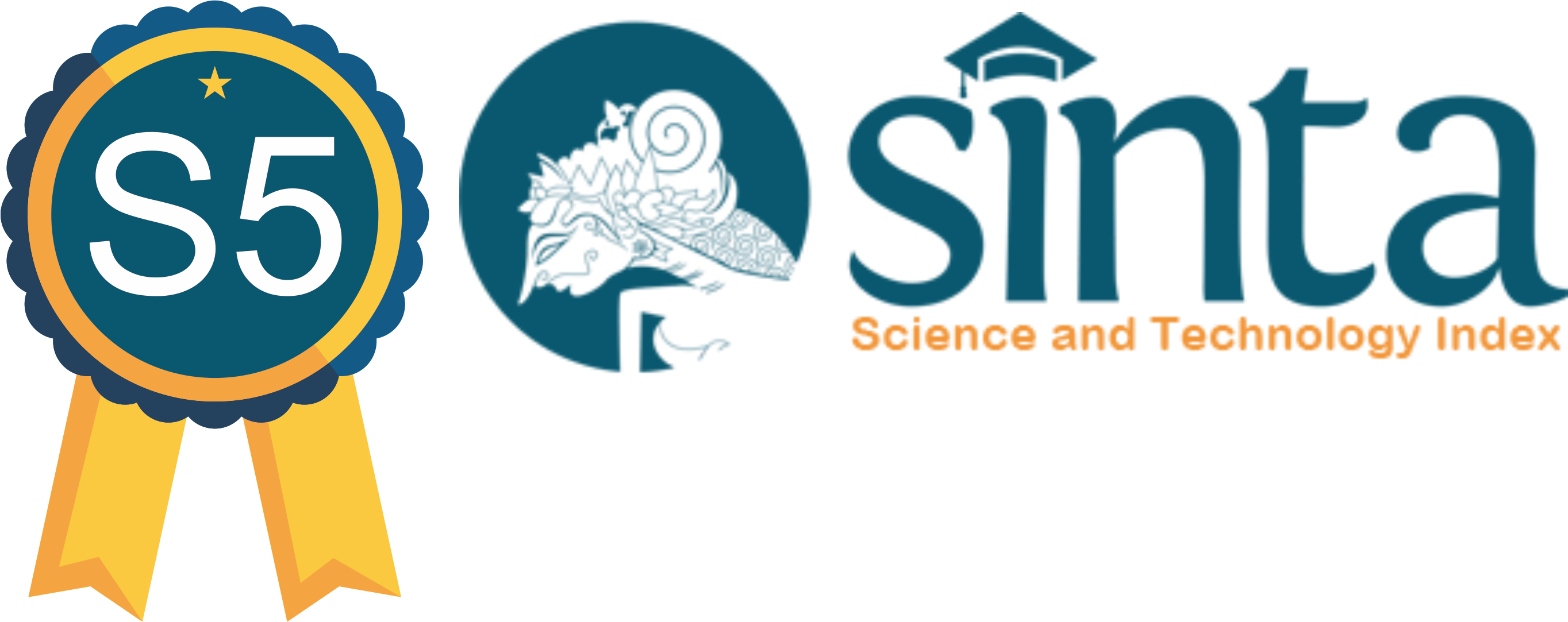The Relationship of Long Work When Using Laptop With Carpal Tunnel Syndrome (CTS) in College Students
Abstract
Carpal tunnel syndrome is one musculoskeletal disorder that often occurs in work that uses the wrist repeatedly in a position that is not ergonomic for a long time. Use of laptops by students sometimes does not pay attention to ergonomics when typing by using a laptop properly and correctly, so it becomes one of the risk factors for CTS. This study aimed to determine the prevalence of a long-standing relationship between p CTS events, repetitive movements, and wrist posture with CTS incidence in students of the Class of 2017 IKM UNDANA Study Program. This research is a type of quantitative research cross-sectional study design. This study showed no relationship between long-standing with using the laptop, repetitive movements, and wrist posture with complaints of carpal tunnel syndrome in students of the class of 2017 IKM UNDANA study program. This research shows that there needs to be good time management when typing using a laptop, especially for students.
Downloads
References
Apjii. (2020). April Internet Survey Report 2019 – 2020. Indonesian Internet Service
Providers Association, 2020, 1–146. Https://Apjii.Or.Id/Survei
Aripin, TN, Rasjad, AS, Nurimaba, N., Djojosugito, MA, & Irasanti, SN (2019).
The Relationship between Computer Typing Duration and Computer Typing Position With Symptoms of Carpal Tunnel Syndrome (Cts) on Employees at the Islamic University of Bandung. Journal of Health & Science Integration, 1 (2), 97–101. Https://Doi.Org/10.29313/Jiks.V1i2.4352
Central Bureau of Statistics. (2019). Indonesian Telecommunications Statistics (Sub-
Directorate of Communication Statistics and Information Technology (Ed.)). Central Bureau of Statistics, Jakarta – Indonesia. Https://Www.Bps.Go.Id
Hamid, A., Fathur Rahman, Z., Suherdin, S., Widati, S., & Ardyanto Wahyudiono, YD
(2020). Factors Related To Carpal Tunnel Syndrome (Cts) Complaints On Employees In The Bank BNI Branch Of Palu. Journal of Public Health Sciences, 11 (01), 63–74. Https://Doi.Org/10.26553/Jikm.2020.11.1.63-74
Nisa, N., Anwar, & M, M. (2018). Overview of Risk Factors for Carpal Tunnel Syndrome
(Cts) in Editorial Division Employees at X Jakarta News Agency in 2018.Public Medicine News 6. Https://Doi.Org/10.22146/Bkm.37696
Nissa, P., Widjasena, B., & Suroto, S. (2015). Relationship between Repetitive Movements
and Length of Work with Complaints of Carpal Tunnel Syndrome in Architectural Engineering Students. Journal of Public Health (E-Journal), 3 (3), 563–571. Https://Ejournal3.Undip.Ac.Id/Index.Php/Jkm/Article/View/12428
Sabila, CI (2019). Individual Characteristics And Occupational Factors With Complaints of
Carpal TunnelSyndrome (Cts) Veneer Repair Workers (Study At Cv. Anugerah Alam Abadi Bondowoso). Thesis, 1–118. Https://Respository.Unej.Ax.Id
Septiawati, D., & Hasyim, Hamzah, N. (2013). Ergonomic Risk Factors When Typing And
Its Relationship With Carpal Tunnel Syndrome. Journal of Public Health Sciences, 4 (November), 15–17.
Https://Ejournal.Fkm.Unsri.Ac.Id/Index.Php/Jikm/Article/View/298
Suherman, B., Maywati, S., & Faturrahman, Y. (2012). Several Working Factors Associated
With Carpal Tunnel Syndrome (Cts) Incidence on Computer Rental Officers in Kahuripan Village, Tasikmalaya City. Paper Knowledge. Toward A Media History Of Documents, 10, 12–26.
Wicaksono Re, Suroto, WB (2016). Use of Laptops in Students of the Faculty of Engineering,
Department of Architecture, Diponegoro University. Journal of Public Health (E-Journal), 4 (3), 568–580 Https://Media.Neliti.Com/Media/Publications/137979-Id-Hubungan-Postur-Durasi-Dan-Frekuensi-Ker.Pdf
Copyright (c) 2022 Anna Maria Mesia, Luh Putu Ruliati, Agus Setyobudi

This work is licensed under a Creative Commons Attribution-ShareAlike 4.0 International License.
Journal of Health and Behavioral Science (JHBS) is licensed under a Creative Commons Attribution-ShareAlike 4.0 International License. You are free to copy, transform, or redistribute articles for any lawful purpose in any medium, provided you give appropriate credit to the original author(s) and JHBS, link to the license, indicate if changes were made, and redistribute any derivative work under the same license. Copyright on articles is held by the authors. By submitting to JHBS, authors grant any third party the right to use their article to the extent provided by the Creative Commons Attribution-ShareAlike 4.0 International License.

 Anna Maria Mesia(1*)
Anna Maria Mesia(1*)








